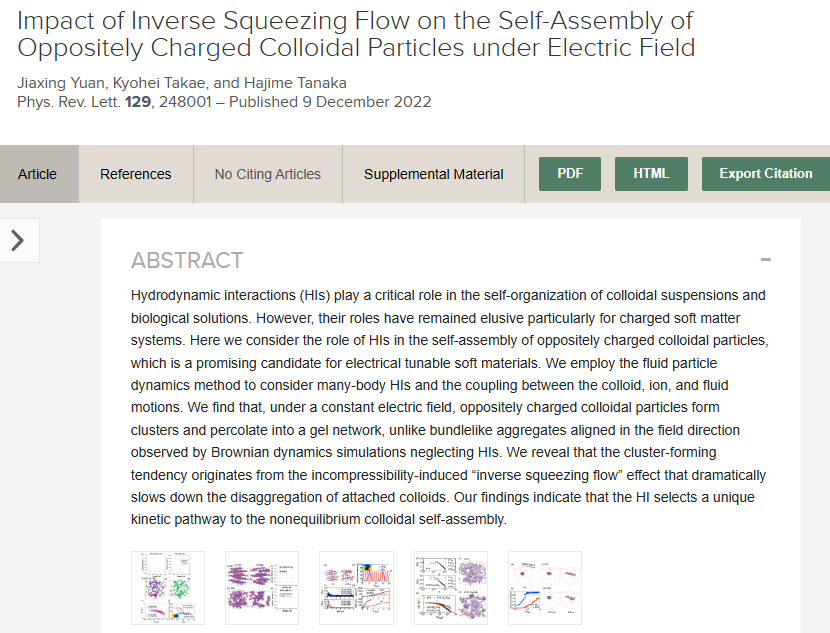Jiaxing Yuan, a Zhiyuan Physics graduate (Class of 2012), is now a postdoctoral researcher at the University of Tokyo. Recently, he has published a paper with the title "Impact of Inverse Squeezing Flow on the Self-Assembly of Oppositely Charged" in Physical Review Letters (PRL) as the first author. Last April, Yuan also published a PRL paper as an author and was recommended by the editor
(original: https://zhiyuan.sjtu.edu.cn/html/zhiyuan/news_view.php?id=3873).

The thesis links: https://journals.aps.org/prl/abstract/10.1103/PhysRevLett.129.248001
Charged soft matter systems can exhibit abundant self-organization. Due to the complexity of calculation, the hydrodynamic interaction is often neglected in the previous simulation and prediction. In this work, Jiaxing Yuan and his collaborators add electrostatic action and ion diffusion to fluid particle dynamics and use this method to investigate the influence of fluid effects on the self-organization of binary charged colloid. Their research shows that the hydrodynamic effect plays a significant role in the self-organizing path. Under the action of external electric field, colloidal particles tend to form branched structures and eventually percolate into gel-like network structures, while traditional simulation methods incorrectly predict the linear chain bundle aggregates. They attribute this qualitative difference in structure to the effect of "reverse extrusion flow" which increases the dynamic stability of the particle clusters.

Jiaxing Yuan, the first author of the paper, said, "Our work has not only developed a new method to simulate the electrostatic and hydro-mechanical effects of soft matter systems, but also revealed the physical mechanism of the hydro-mechanical effects in selecting the self-assembly path, which has broad implications for understanding the self-organization of charged soft matter systems suspended in solution. From a materials application perspective, this work may contribute to the development of smart soft materials, in which self-organizing structures exhibit significant responses to external environments such as electric fields. "
